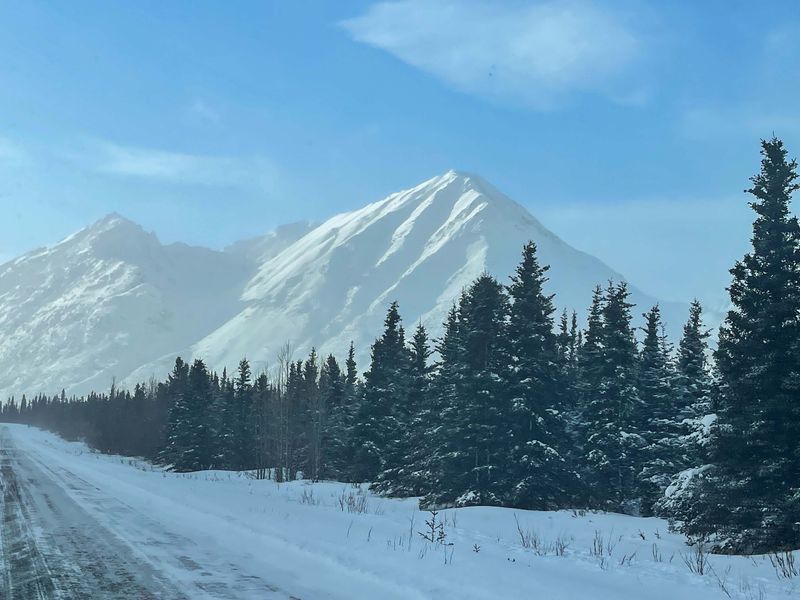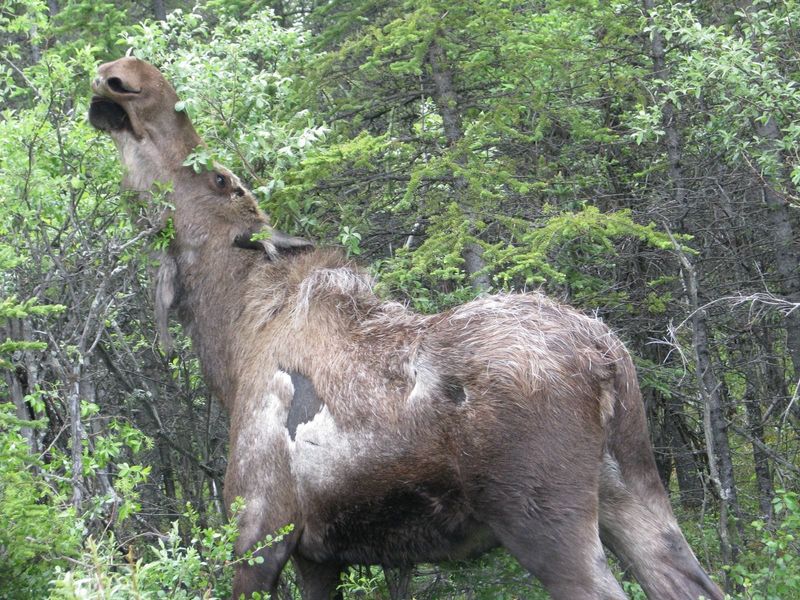

WASHINGTON − The summit meeting between President Donald Trump and his Russian counterpart Vladimir Putin will focus on ending Putin's war in Ukraine, with Alaska's awesome beauty and vulnerabilities as its backdrop.
The two world leaders will meet at Joint Base Elmendorf-Richardson, the post that crowns Anchorage to its south. It’s an installation that teems with airmen and soldiers − plenty of moose and bears, too, befitting its location on the edge of Alaska’s vast stretches of black spruce-fringed wilderness.
Cold, dark and snowy in the winter, the base gets near round-the-clock sun at summer’s peak.
It’s a prime midway rest stop for dignitaries, like presidents and cabinet secretaries, on the route from Washington to eastern Asia. The flight from the East Coast to the southern coast of Alaska takes roughly eight hours, about the limit for air crews before mandated rest, and a convenient, secure location to refuel.
Long before air travel and a superpower summit, U.S. and Russian leaders haggled over Alaska. In 1867, Secretary of State William Seward secretly negotiated with Russian officials to buy the territory of Alaska for $7.2 million. Derided at the time as Seward’s Folly, the deal worked out for the Americans. Alaska – its people, awesome landscape and enormous natural resources – joined the union in 1959.
Before statehood, the Army established the base that would become Elmendorf-Richardson in 1940 during the runup to World War II. Since then, soldiers and airmen along with smaller contingents from the Navy and Marine Corps have called the base home. In all, the joint base hosts about 30,000 service members, their family members and civilian employees.
Its key location – near Russia and close to Arctic resources eyed by China – has made Elmendorf-Richardson and other Alaskan military installations increasingly valuable to the Pentagon. More personnel and money have been streaming into Alaska in recent years to bolster northern defenses. The base takes part in some of the military’s most intricate annual war games, featuring sophisticated weapons like the F-22 fighter.
Alaska is the land of superlatives. The state is more than twice the size of Texas; its 46,000 miles of shoreline are more than the lower 48 states combined; Denali's snow-capped peak towers over the interior at more than 20,000 feet.
Brown and black bears, moose and wolves, roam tundra and black spruce forests. Temperatures routinely drop to 50 degrees below zero in the interior, where Fort Wainwright sits on the edge of Fairbanks. Dim sunlight smudges skies for only a few hours in the depth of winter.
Cabin fever can be very real.
In the summer, it truly is the Land of the Midnight Sun. Perpetual daylight has its downside, disrupting sleep, leading to irritability – and worse. Alaska routinely ranks among the nation's leaders in alcohol abuse and suicide.
In recent years, Alaska’s strategic, remote location has exposed its vulnerabilities. Suicide among soldiers spiked to alarming levels. Reporting by USA TODAY revealed a shortage of mental personnel to help them. The Army and Congress intervened, dispatching dozens of counselors and spending millions to improve living conditions for troops there. Suicide rates declined.
Efforts by Chinese spies to gain access to Alaskan bases hasn’t, however, USA TODAY has reported. The bases contain some of the military’s top-end weaponry, sophisticated radars to track potential attacks on the homeland and missiles to intercept them.
Russia, too, regularly probes America’s northern flank. As recently as July, 22 the North American Aerospace Defense Command detected Russian warplanes operating in the Alaskan Air Defense Identification Zone.
When aircraft enter the zone, they must be identified for national security purposes. The Russian planes remained in international airspace, a tactic they employ regularly. Mildly provocative, the flights are noted by NORAD but not considered a threat.
Meanwhile, global warming has thawed permafrost beneath runways and rising water levels have damaged coastal facilities requiring remediation costing tens of millions of dollars. A skeptic of climate change, Trump could view for himself its effects, including cemeteries eroded by rising sea levels disgorging coffins of flu and smallpox victims from more than a century ago. The potential release of ancient pathogens from melting permafrost has captured the Pentagon’s attention, too.
Alas, Alaska may have been Putin’s last, best choice for a summit. His brutal, unprovoked invasion of neighboring Ukraine has made him an international pariah. Denied entry into Europe, he and Trump could not repeat their summit in Helsinki, the capital of Finland, which is now a member of NATO − due mainly to the invasion.
Luckily for Putin and Trump, Anchorage is a delightful city, cool in midsummer and it's far removed from Russia's war with Ukraine.
This article originally appeared on USA TODAY: Trump-Putin summit spotlights Alaska's strategic importance, vulnerability
Reporting by Tom Vanden Brook, USA TODAY / USA TODAY
USA TODAY Network via Reuters Connect

 USA TODAY National
USA TODAY National
 FOX News
FOX News FOX Business Video
FOX Business Video NBC26
NBC26 America News
America News Raw Story
Raw Story Reuters US Domestic
Reuters US Domestic CNN Politics
CNN Politics Associated Press US News
Associated Press US News Local News in D.C.
Local News in D.C. AlterNet
AlterNet The List
The List